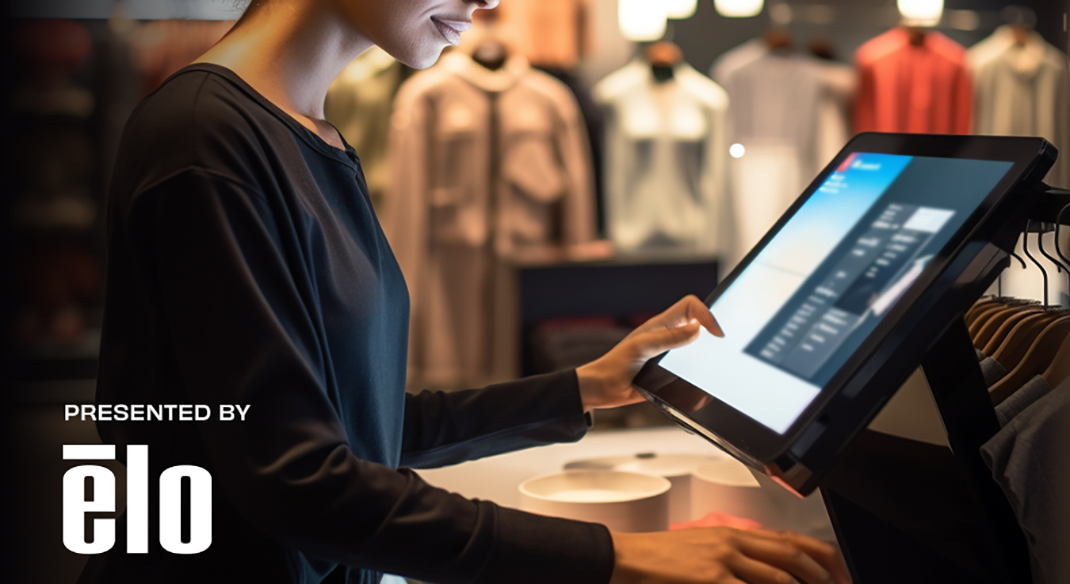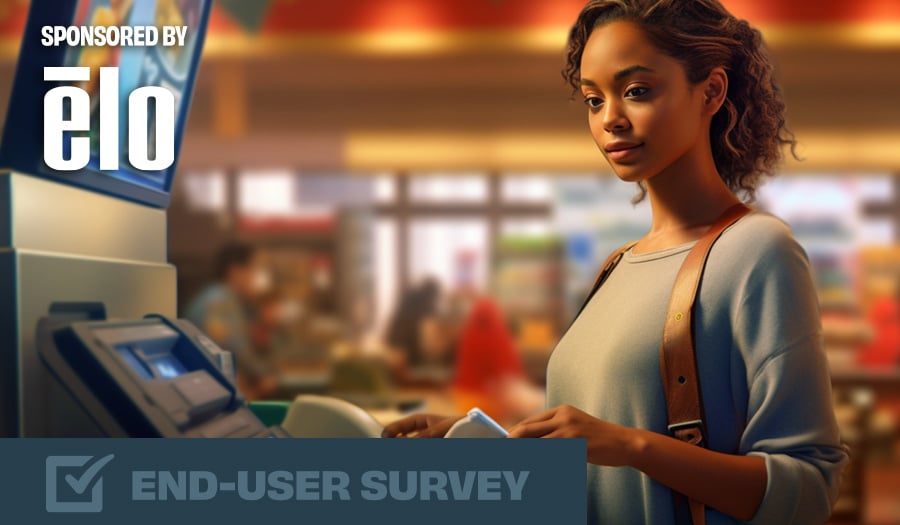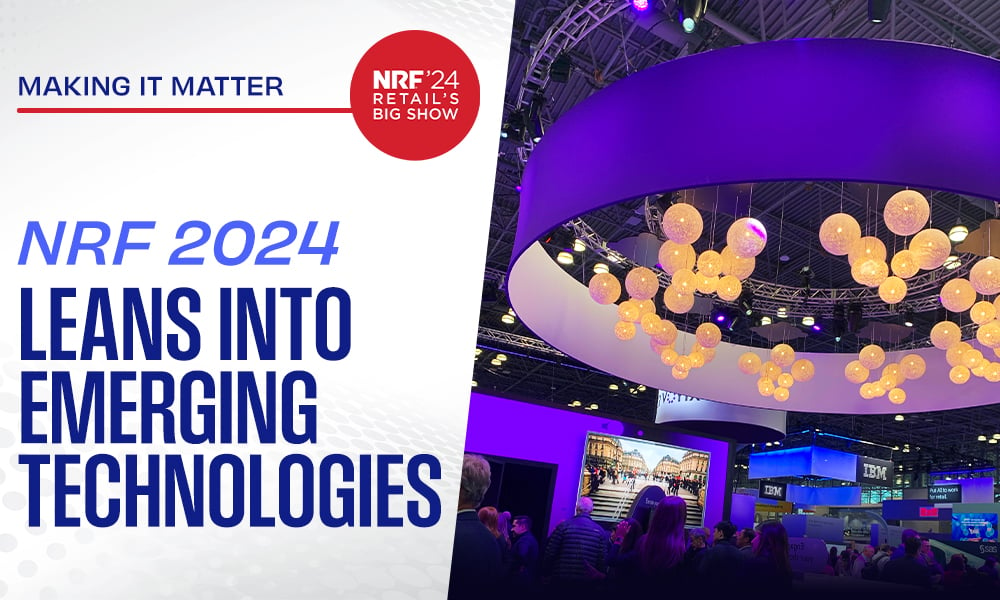Selling point-of-sale technology to retail businesses is hard. Real hard.
Every year, new players with compelling offerings enter the space. Today, there are hundreds of viable software and hardware options available, and the merchant services landscape is incredibly competitive.
Point-of-sale companies and value-added resellers operating in 2022 and beyond need a go-to-market strategy and product/service messaging that resonate with business owners.
Building a strategy without qualitative and quantitative data inputs is like feeling your way around a room in the dark, and since we're invested in our partners' success, we went out and collected the data for you.
What We Did
BlueStar's telemarketing team called out to a group of over 4,000 small-and-medium-sized business owners in the United States.
When the business owner wasn't available, we talked to store managers and other associates who could speak intelligently about their POS technology.
We offered a $15 gift card in exchange for their input and informed the respondents that their responses would be used as the basis for an article about point-of-sale technology use.
We collected responses from 81 businesses in total.
What we found surprised us.
Respondent Profiles
Our call list focused on retail and hospitality subsegments such as beer, wine and liquor, restaurants, clothing and apparel, furniture, jewelry, electronics, health and personal care, appliances, and gas stations with convenience stores. We targeted businesses with employee counts between 5-200.
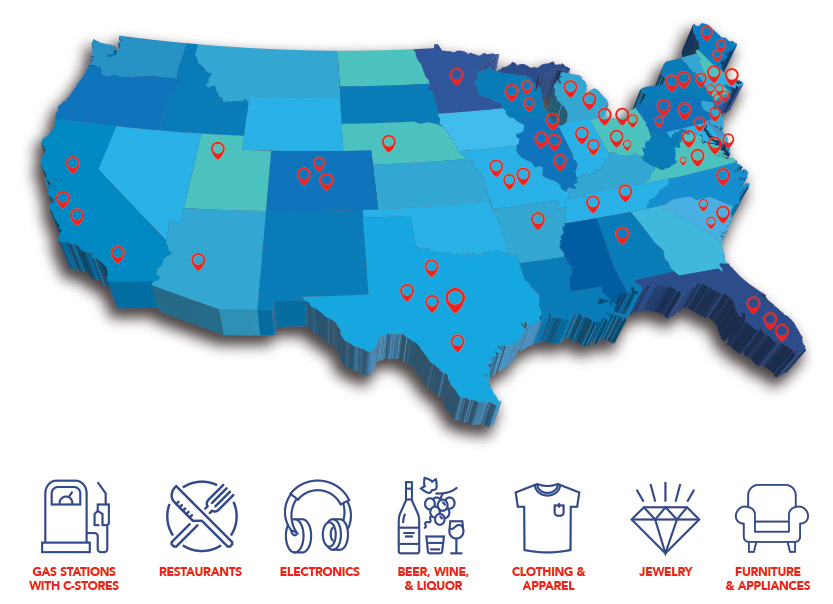
What they said
We started by asking people two simple questions:
-
About how long have you been using your current point of sale system?
-
On a scale of 1 to 10, how satisfied are you with your current point of sale system?
The average length of use was 9.7 years (!) and the average satisfaction rating was 7.6 out of 10. Compared with anecdotal feedback we've collected over the years, we expected to find a shorter length of system use and lower satisfaction rates.
Although this is good news for the businesses and their POS solution providers, it does indicate that salespeople in the space aren't exactly shooting fish in a barrel.
Next, we asked:
Which aspects of your current [POS] system are the biggest pain points?
For this question, we provided a set of options and only asked people who indicated a satisfaction rating of 5 or below about pain points (a total of 16 businesses). We also asked every respondent in a separate, open field about the most frustrating aspect of the system (more on this below).
For respondents who were unhappy with their current system, [lack of] ability to customize was the top contributing factor to their dissatisfaction, with half of the unhappy respondents returning this response.
Right on the tail was a three-way tie between Difficulty of Use, Suboptimal Reporting Functionality, and [lack of] Speed. Affordability and Credit Card Processing Rates were the least offending aspects of the lower scoring POS systems, with only a few respondents mentioning them as negative aspects of their current solution—said more simply—it is seemingly NOT all about price.
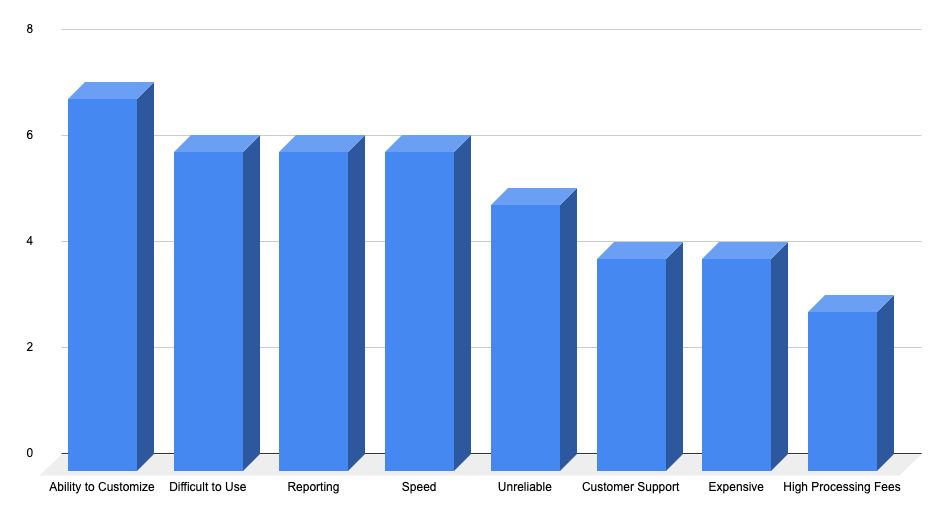
Then, we posed a similar question:
"Which aspects of your system contribute to your satisfaction?"
This was asked only to businesses who indicated a satisfaction rating of 6 or above (65 businesses total). The results pointed to the following aspects as the biggest contributors to their satisfaction:
- Ease of Use - 43 of 65 (66%)
- Reliability - 38 of 65 (58%)
- Speed of the System - 33 of 65 (51%)
- Ability to Customize - 32 of 65 (49%)
- Reporting Functionality - 31 of 65 (47.6%)
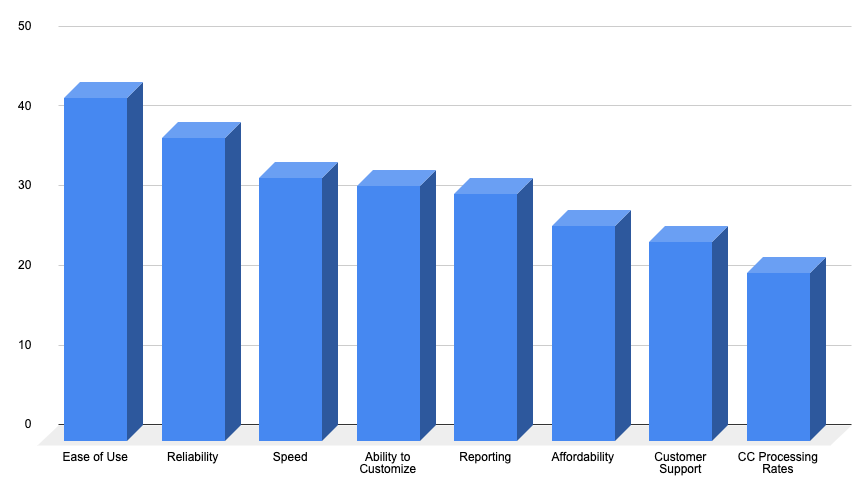
Somewhat surprisingly, Affordability (27 or 65 or 41.5%), Customer Support (25 of 65 or 37%), and Credit Card Processing Rates (21 or 65 or 32%) rounded out the factors contributing to customer satisfaction coming in at the 6th, 7th, and 8th spots respectively.
Perhaps customer support showing up lower on the list is correlated to happiness around ease of use and reliability. As well, with Credit Card Processing Rates being less of a factor on both the satisfied and unsatisfied ends, one could surmise that the margin between high and low rates is so slim that most merchants aren't seeing it as a deal-maker nor a deal-breaker as it relates to happiness on the overall system.
Just for fun, we asked:
"Do you accept contactless payments like Apple or Google Pay?"
It was almost a perfect 60/40 split with 49 businesses indicating they did accept contactless payments and 32 confirming that they did not.
For those who do not accept contactless, the reasoning ("Why not?") was split between:
- The [hardware/software] system doesn't accept this payment method
- Not necessary / customers haven't requested this technology
Then, it got real when we inquired:
"If a better system was available, would you consider switching?"
54% of total respondents (including 27 that rated their system a 7 or above) answered affirmatively!
So although folks are generally satisfied with their current solution, they're open to the idea of a system that better fits their needs displacing their current solution.
Naturally, we wondered what was contributing to either the satisfaction or dissatisfaction with current systems and what would need to be true in order for happy customers to make a change?
- 38 percent of respondents said they would not change their system (31 total)
- Over half—53 percent or 43 total respondents—said they would consider changing their system
- ~9 percent (7 total businesses) said maybe
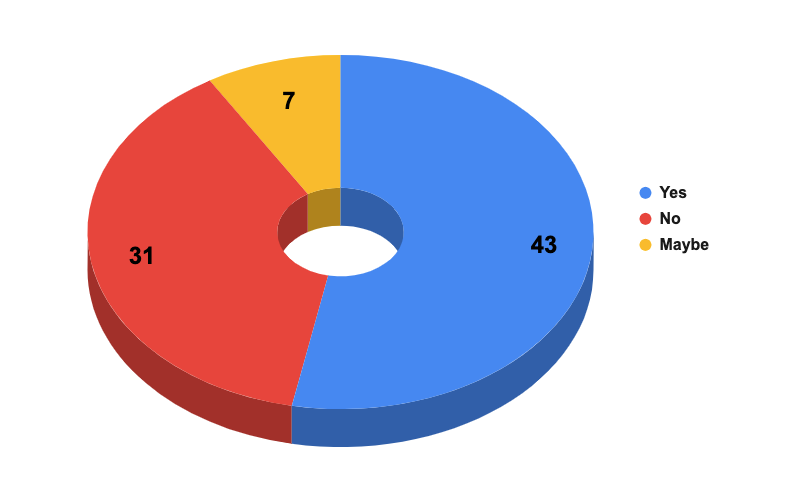
We were pleased to learn that 27 business rated their POS system either a 9 or 10. However, out of those, 11 were still open-minded about a potential change.
Out of the "No" respondents, difficulty in migrating sales/inventory data, challenges in training the staff on a new tool, and third party compatibility requirements (finance, eCommerce, billing) were the dominant reasons with virtually no other objections showing up more than once.
Lastly, we let them vent by asking:
"What is the most frustrating aspect—either on the hardware or software side—of your current point of sale system?"
Answers here were all over the map here without much consensus. We've noted earlier in this analysis that Customer Support was not mentioned as a heavy contributor to either satisfaction nor dissatisfaction—but it did show up here with (11) mentions of poor or tough to contact customer / technical support.
Lack of or insufficient reporting was mentioned just (4) times as a source of frustration.
Lastly, technical troubles with hardware were mentioned (4) times with printers, barcode scanners, and cash drawers receiving mentions.
Key Takeaways
- Retailers are largely happy with their current point of sale systems, with the data showing an average satisfaction rating of 7.6 out of 10. For the people we spoke to, the average time using their current system was nearly a decade (9.7 years).
- Overwhelmingly, business owners see data migration—including historical sales and inventory—as the biggest obstacle to adopting and deploying a new point of sale system with the burden of training their team on a new system coming in a close second.
- 61.7% of respondents rated their current system an 8 or above.
- 54% of respondents (44) indicated they would be open to switching systems if something better came along, including 27 survey takers who rated their system a 7 or above.
- User experience and reliability are key factors in producing happy point of sale customers—above affordability or even customer support—aspects that apply to both the software and hardware components of a complete system.





